
Alopecia Areata, or hair loss, may be a distressing and unpleasant experience. The impact extends beyond looks, whether it is rapid thinning, uneven hair loss, or a slow receding hairline. Small bald spots develop on the scalp. If you wish to remedy these concerns, you must visit our clinic and receive therapy. The technique is both successful and inexpensive. There is no permanent therapy for alopecia areata. However, Alopecia Areata Treatment in Islamabad Pakistan will manage your hair loss and promote hair growth.
Understanding the most effective treatments for Alopecia Areata in Islamabad, Pakistan, is the first step for individuals looking for dependable remedies.
Quick Facts
- Procedure Type: Non-Surgical
- Duration: 30-60 Minutes
- Recovery: Immediately
- Results: Long-Lasting
- Cost: PKR 9,999 to PKR 30,000
What Is Alopecia Areata?
Alopecia areata is an autoimmune illness in which the body attacks its own hair follicles, causing patches of hair loss. It may happen anywhere on your body. The hair may regrow on its own; but, if the condition is not treated, it can develop to alopecia universalis, which is the loss of hair from the entire body.
Alopecia simply means hair loss, and its various forms include male- and female-pattern baldness, chemotherapy-induced alopecia, frontal fibrosing alopecia—in which the hair line recedes from ear to ear (most commonly in women in their 50s and older), and alopecia areata, which causes patchy—and sometimes complete—hair loss on the scalp, brows, eyelashes, and body; it appears out of nowhere, usually in the first 40 years of life.
Types Of Alopecia Areata
According to the severity of the disorders, Alopecia Areata is categorized into three groups.
- Alopecia areata: One or more patches of hair loss, most typically on the head or face, but can occur anywhere on hair-bearing skin.
- Alopecia areata: Complete or virtually complete loss of scalp hair.
- Alopecia Universalis is the full or almost complete loss of hair on the scalp and body, including brows, eyelashes, armpits, and pubic hair.
What Are The Causes Of Alopecia Areata?
The specific etiology of alopecia areata is not entirely understood, however it is considered to be a result of a mix of hereditary and environmental causes. It happens when the body’s immune system erroneously targets the hair follicles, leading to their shrinking and consequent hair loss. Stress, viral or bacterial infections, hormone abnormalities, and certain drugs can all contribute to the condition’s onset or progression. Understanding the causes of alopecia areata is a crucial step in developing viable treatment options.
What Are The Symptoms Of Alopecia Areata?
Most persons with alopecia areata will experience one or a few circular patches of hair loss on the scalp, brows, eyelashes, and/or torso. Others, however, endure significant, and occasionally complete, hair loss.
It is critical to understand that “alopecia totalis” and “alopecia universalis” are the same diagnosis as “alopecia areata,” but they are outdated terms used to describe alopecia areata that results in total loss of scalp hair (alopecia totalis) or total loss of hair on the scalp, face, and body.
Can Alopecia Areata Be Cured?
Alopecia areata cannot be treated, however it is possible to regenerate hair. The autoimmune response that causes hair loss in alopecia areata seldom causes lasting damage to the hair follicles, therefore hair restoration is possible. The degree of hair loss influences the possibility of spontaneous hair regeneration.
Types Of Alopecia Areata Treatments
There are several types of Alopecia Areata Treatments available at SKN Cosmetics, including;
Alopecia Areata Treatments | |
|---|---|
| Platelet-Rich-Plasma Therapy | PRP treatment, which utilizes a person’s own blood, improves the hair issue. A sufficient volume of blood is drawn from the arm or other body part, and that blood is then placed in a centrifuge to separate the growth cells. Following separation, these blood cells are reinjected into the scalp. The general phenomena causes hair growth. |
| Hair Transplant | In this approach, the doctor first determines whether a donor region exists. Following this stage, the appropriate amount of hair is extracted from the donor area, either in the form of tiny hairy patches or merely the hair follicles, depending on the procedure used. The selected hair is then placed into the bald area. This promotes hair growth. |
| Steroid Injections | These are the drugs administered as injections to address the condition. Injections are critical to get the best results. Steroids are the greatest treatment for alopecia sufferers. Topical corticosteroids are administered to the afflicted region as lotions or creams. Corticosteroids really have anti-inflammatory properties. |
| Minidoxil | Minoxidil treatments are used to address hair loss difficulties. It is also used to treat alopecia areata, although the treatment is ineffective unless corticosteroids are administered. The answer is to apply to the bald region twice or three times each day. One advantage of the therapy is that it has no adverse effects. |
| Hair Wigs | Although the condition is handled in various ways, one remedy is Hair Wigs Islamabad. The wigs made are of two types: original hair wigs and synthetic wigs. |
How Does Alopecia Areata Treatment Work?
Each treatment works by either suppressing the immune response that is damaging the follicles or by stimulating hair regrowth through blood flow, nourishment, and cell repair. At SKN Cosmetics, your treatment plan is chosen after a thorough scalp analysis and medical assessment to ensure it is effective and safe for your case.
What To Expect In Results?
Following the treatment, hair growth on the scalp resumed. The outcome of the treatment is not always guaranteed, but in most cases, patients receive the desired results. The technique provides long-term and effective results.



Benefits
Some of the top benefits of Alopecia Areata Treatment are;
- The technique improves blood flow in the scalp region.
- The hair texture is better.
- Bald, spotty regions diminish.
- Strengthening hair roots reduces hair loss, improves overall appearance, and boosts confidence.
Who Is An Ideal Candidate For Alopecia Areata Treatment?
Anyone can be an ideal candidate of Alopecia Areata Treatment if they;
- I Am a child.
- Have a family history of alopecia areata.
- Have an autoimmune ailment, such as diabetes, lupus, or thyroid disease.
- Are experiencing sudden patchy hair loss
- Are in good general health
- Are not responding to over-the-counter solutions
- Want non-surgical, minimally invasive treatments
How Long Does The Results Of Alopecia Areata Treatment Last?
The results of Alopecia Areata treatment can last for several months to years, but they are not always permanent. Since Alopecia Areata is an autoimmune condition, the hair may regrow and remain stable, or it might shed again if triggered by stress, illness, or immune activity.
Consistency with follow-up treatments and proper care can help maintain results longer and reduce recurrence.
How Is Alopecia Areata Diagnosed?
Alopecia areata is often diagnosed based on hair loss pattern and history. In certain circumstances, a biopsy is required to confirm the diagnosis. When we do a biopsy, we are looking for immune cells around the base of the hair follicle in order to make the diagnosis.
What Tests Will Be Done To Diagnose Alopecia Areata?
If your healthcare professional is unable to diagnose your bald spots based on a physical examination, they may:
- Check your scalp for symptoms of infection.
- Take a sample of your hair and submit it to the lab for testing.
- To diagnose skin condition, do a scalp biopsy.
- Conduct blood testing.
How Do Dermatologists Treat Alopecia Areata?
It is crucial to understand that no single treatment works for everyone, and treatment is not always suggested.
Your dermatologist will decide what works best for you depending on:
- How much hair have you lost?
- How long have you had hair loss?
- Where have you lost hair?
- Your age (children may require different treatments)
Based on these and other factors, here is what a treatment plan may look like:
One or two bald patches that have existed for less than a year:
Your dermatologist may suggest a wait-and-see strategy. Many people, particularly children, regrow hair without therapy.
Regrowth might be gradual, and some people do not see the results they anticipate. If you are dissatisfied with the regrowth, your dermatologist may recommend medicine that you apply to the regions that want additional regrowth. A standard treatment strategy includes using a corticosteroid to regenerate your hair and then minoxidil (Rogaine®) to retain the hair that has grown back.
Children 10 years old or younger:
Children’s hair may regenerate without therapy. When a small kid requires therapy, a dermatologist may suggest the following:
- Apply a corticosteroid to the bald patches. Corticosteroids of prescription strength can aid in hair regrowth. This drug is used once or twice a day. For youngsters, this alone can be a successful therapy.
- Minoxidil: This medicine can assist patients in maintaining the hair that regrows. Most individuals begin using minoxidil after discontinuing the corticosteroid. Minoxidil has little adverse effects, making it an excellent choice for youngsters.
Treatment choices for children above the age of ten are frequently determined by the extent of hair loss. A dermatologist may prescribe contact immunotherapy or a JAK inhibitor that is licensed to treat alopecia areata in individuals aged 12 and up. Dermatologists may offer one or more of the following treatments for patchy hair loss in adults and children over the age of ten.
Corticosteroid injections can be a helpful therapy for adults. Your dermatologist will inject corticosteroids directly into the areas of hair loss. You will require numerous injections every 4 to 6 weeks. When effective, patients often notice some hair regrowth within three months of receiving the initial injection.
This is regarded as the most effective therapy for persons with a few areas of hair loss. In one trial of 127 individuals with patchy hair loss, more than 80% who received these injections saw at least half of their hair regenerate after 12 weeks.
How Do I Take Care Of Myself?
People with alopecia areata can care for themselves using a variety of cosmetic and protective procedures, such as:
- Use cosmetics to conceal or reduce hair loss.
- If you have lost your eyelashes, wear sunglasses to shield your eyes from the sun and the elements.
- To protect your head from the weather, use a covering such as a wig, hat, or scarf.
- Follow a well-balanced diet. Hair development depends on vitamins and minerals. Although not connected to alopecia areata, persons who follow fad diets frequently experience hair loss. The Mediterranean diet contains fruits, vegetables, and protein, which may help strengthen and prevent hair loss.
- Consider taking a vitamin D pill.
What Are The Things To Avoid When You Have Alopecia Areata?
Things to Avoid When You Have Alopecia Areata;
- The elements: Our hair shields us from the sun and wind. Our eyelashes assist to keep junk out of our eyes. If you have alopecia areata, you must take steps to protect your skin (and, in certain cases, your eyes) when outside.
- Lots of stress: Although never confirmed in big trials or investigations, many persons with new onset alopecia areata experienced recent life pressures such as job, family, funerals, operations, accidents, and so forth.
- Hair products and treatments using harsh chemicals: This covers both chemical straighteners and permanent waves. Look for mild shampoos and conditioners that do not include silicones or parabens.
When Should I See My Healthcare Provider?
Contact a healthcare physician as soon as you detect hair loss. After you begin therapy, contact your doctor if:
- You experience new symptoms.
- Your symptoms do not improve with therapy.
- Your afflicted regions seem infected (red, purple, gray, or white skin with itching and swelling).
Alopecia Areata Treatment Aftercare Instructions
The aftercare instructions of alopecia areata treatment are;
- Avoid washing the scalp for at least 6–12 hours
- Refrain from scratching or touching treated areas
- Avoid direct sunlight for 48 hours
- Use prescribed topical products as directed
- Attend follow-up appointments to monitor progress
Alopecia Areata Treatment Side Effects
Following are Alopecia Areata Treatment side effects;
- Redness or irritation at the treatment site
- Itching or mild burning sensation
- Temporary hair shedding (shock loss)
- Scalp sensitivity or tenderness
- Skin thinning (with repeated steroid use)
- Headache or fatigue (in systemic treatments)
- Increased risk of infection (with immunosuppressants)
- Mild swelling or bruising after injections
Cost of Alopecia Areata Treatment In Islamabad
The cost of an Alopecia Areata Treatment in Islamabad, Pakistan may range from PKR 9,999 to PKR 30,000. On average, the cost of Alopecia Areata Treatment in Pakistan varies depending on the method chosen, size of the area affected, number of sessions needed, and any additional products prescribed.
Cost-related factors:
- Type of treatment and number of sessions
- Clinic location, dermatologist experience, treatment area size, and customization options.
Starting Cost (PKR) PKR 9,999 | Final Cost (PKR) PKR 30,000 |
Can Hair Grow Back From Alopecia?
Alopecia areata can be unpredictable. Some people’s hair comes back but eventually falls out. Others’ hair regrows and never falls out again. Every incidence of alopecia areata is distinct. Even if someone loses all of their hair, there is a possibility that it will regrow. Depending on your therapy and its efficacy, you may notice new hair growth between four to twelve weeks of starting.
Why Choose SKN Cosmetics For Alopecia Areata Treatment In Islamabad!
To cure alopecia areata in a cheap and efficient manner, please call SKN Cosmetics Clinic in Islamabad. Our clinic employs the greatest hair transplantation practitioners who have extensive expertise in their professions. We are proud of ourselves for transforming many individuals and solving their difficulties. If you are experiencing hair loss, you may consider yourself an excellent candidate. Simply contact us.
Book Your Free Consultation!
Fill in the consultation form so that one of the hair specialists at SKN Clinic can diagnose your condition of Alopecia Areata in Islamabad, Rawalpindi & Pakistan and recommend an effective course of treatment.
FAQs
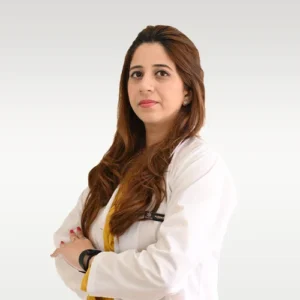

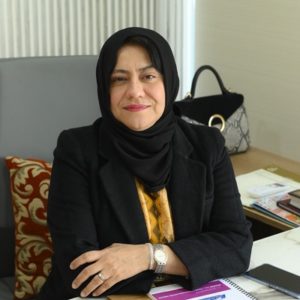

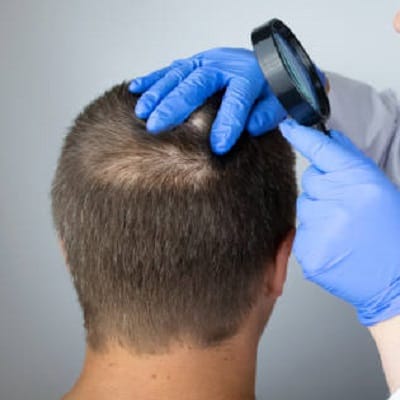
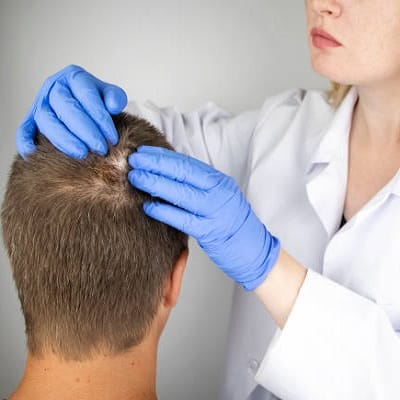
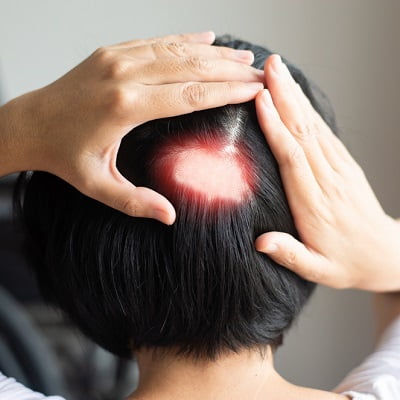
Book your Appointment